The Corsair Carbide 400Q Case Review
by E. Fylladitakis on April 29, 2016 9:00 AM EST- Posted in
- Cases/Cooling/PSUs
- Corsair
- ATX
- E-ATX
- Carbide
The Exterior of the Corsair Carbide 400Q
Corsair went with a minimalistic refined design with the Carbide 400Q. The entirety of the case, both inside and outside, is satin black. It is worthwhile to mention that the external paint job is immaculate and that the paint is highly resistant to fingerprint marks. All of the case’s panels are flat and metallic, including the faceplate - the top of which is the only part of the case that is making a rounded edge. Measuring 46.4 cm tall, 21.5 cm wide and 42.5 cm deep (18.3 × 8.45 × 16.75 in), the Carbide 400Q is a rather compact midi ATX tower case like Corsair claims it is, falling between the SilverStone Fortress FT05 (7.5% larger) and the NZXT S340 (9.5% smaller). While NZXT managed to make their case nearly 10% more compact, we should note that the Carbide 400Q supports more parts and larger hardware parts, such as EATX motherboards.
11.2 oz (330ml) can inserted as size reference
The front faceplate cannot be opened, as there are no external drive bays anyway. Its frame is actually plastic, with the metallic plate being just a top cover for aesthetic purposes, and can be removed to clean the front filters and to allow access for the mounting of liquid cooling radiators. Corsair says that it can be simply pulled off, but that was not true for our sample: it required a lot of force to come off and that does not bode well for the longevity of the plastic mounting studs.
The front I/O ports and buttons are at the top panel, near the front side of the case. Starting from left to right, we can see a small reset button, an activity LED, two 3.5mm headphone jacks, two USB 3.0 ports and one large square power button.
A look at the rear of the Carbide 400Q reveals that the PSU compartment is located at the bottom, a common design feature as of late. We can also see the 120 mm fan, the position of which can be adjusted vertically by about one inch. There are no holes for cables or liquid cooling hoses.
One of the most interesting parts of the Carbide 400Q is the top panel, which features a magnetic cover with a narrow layer of sound dampening material. The case comes without any fans from the factory but, should the user wishes to trade acoustics with thermal performance, the top cover can be simply pulled off to reveal the perforated top of the case.
The Carbide 400Q stands on four rather tall plastic feet with rubber anti-slip pads at their bottoms. The feet are particularly tall for a case that has limited underside ventilation (only for the PSU). Although the feet can be removed, the 400Q is designed to function with the feet attached - the PSU intake will be blocked and the furniture will be exposed to many rigid objects that can cause damage. The PSU intake has a nylon filter that can be removed from the back of the case.


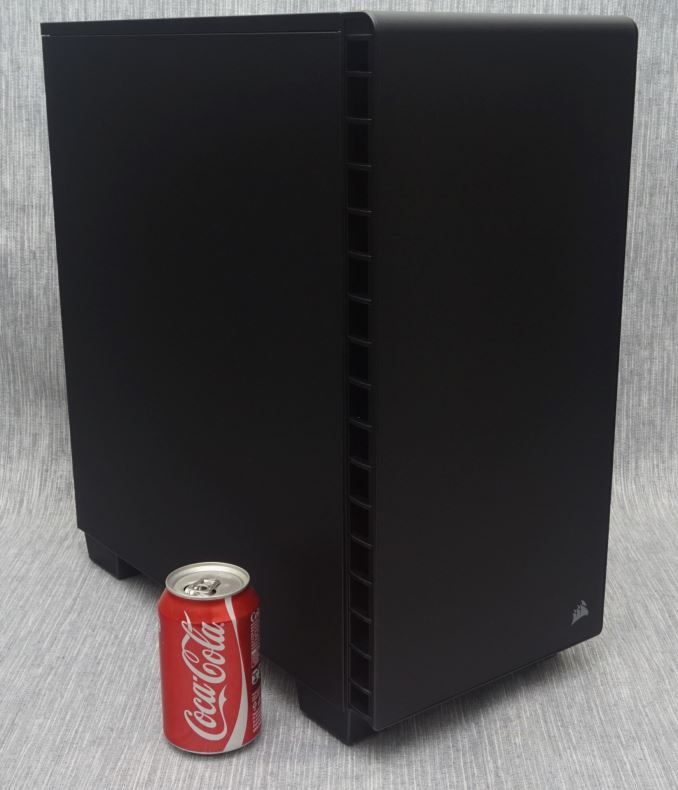
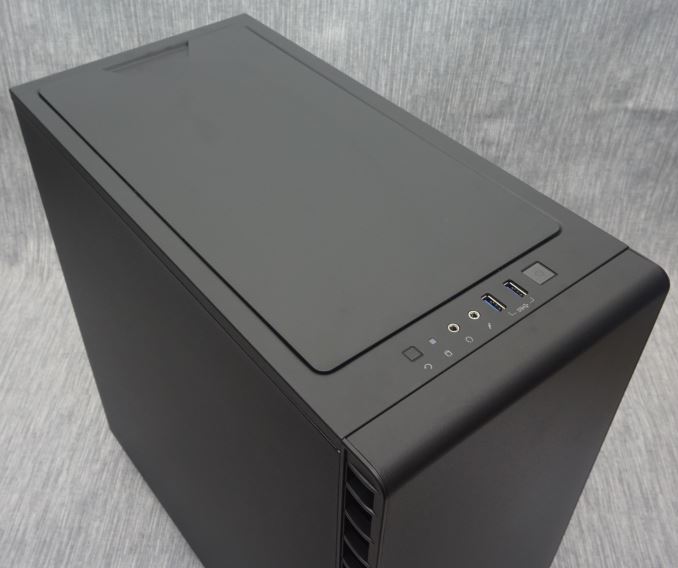
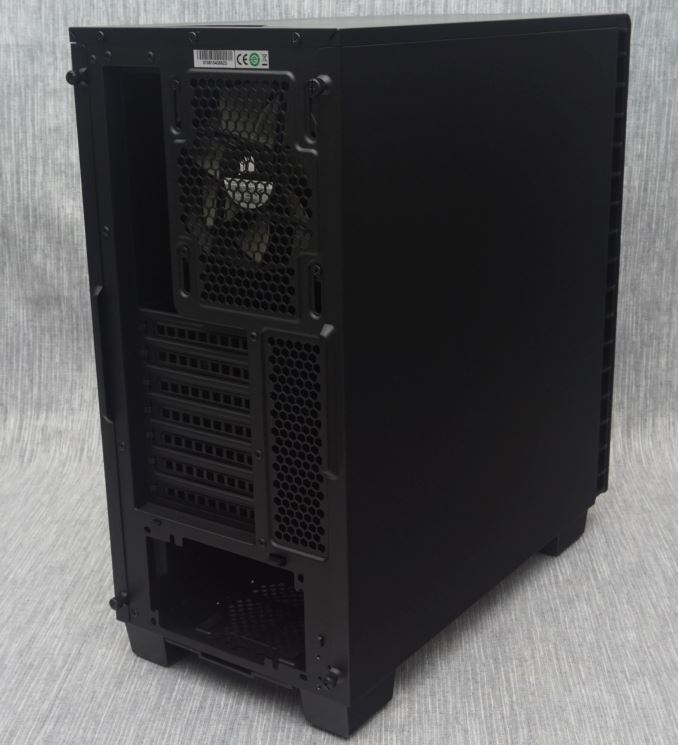
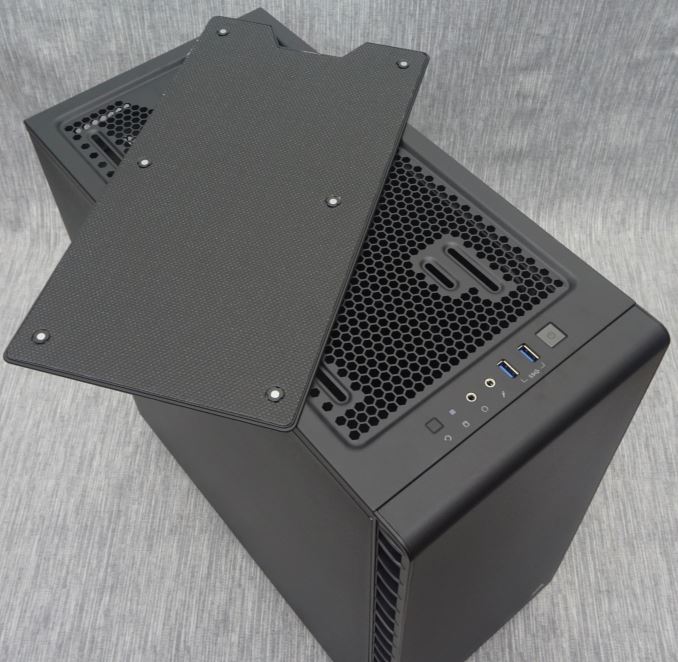
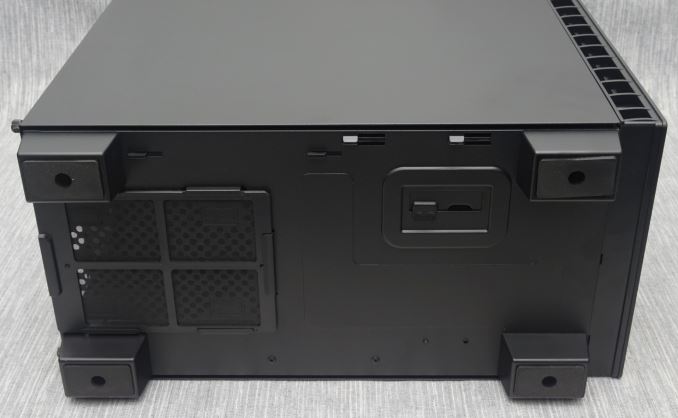








63 Comments
View All Comments
mostlyharmless - Saturday, April 30, 2016 - link
I've never seen a case with a modular (on/off, mike/headphone, USB) section that could be relocated to various areas of the case (top, upper front, lower front). Though it'll be a non-issue when all ports are wireless.Murloc - Sunday, May 1, 2016 - link
meh it would look ugly, plus there are so many cases that all use cases are covered.mostlyharmless - Sunday, May 1, 2016 - link
... until you moved your PC to a new location & something different would be more convenient.egmccann - Wednesday, May 4, 2016 - link
True. It was one of the irritations I had with my old Sonata (and my current coolermaster case, actually.)As far as this case... no external drive access means it's not for me. Which is to bad, as I kind of like the straightforward aesthetic. (I don't want or need case windows, lights, etc.)
Valantar - Monday, May 2, 2016 - link
Considering the amount of wiring coming out of front I/O panel, they aren't exactly easy to move around. It would probably be doable, but I'd bet not worth ruining the aesthetic of the case for 99% of designers.tromedo - Monday, May 2, 2016 - link
Any idea when motherboards will have internal USB Type-C Headers and the case manufacturers will adopt it for the front panel?colonelclaw - Tuesday, May 3, 2016 - link
I was wondering that myself. Should we be expecting a $99 case to have USB-C or is it too soon to be thinking that way?Haravikk - Monday, May 2, 2016 - link
Looks like a good case; I'm very much a fan of the muted looks and the sensible internal layout. Bit disappointed that the sides require thumbscrews and the front is friction fit when the top is magnetic, as I wouldn't mind paying a bit extra for some decent strength magnets for super-easy access.I know it's pretty typical to only review the bundled fans, but it would have been nice to see what kind of differences could be expected with different fan arrangements. I'm particularly interested in what the case might be like with liquid cooled graphics and the biggest passive CPU cooler that money can buy, leaving the top open. At modest fan speeds I imagine it should still be pretty quiet for modest gaming demands (not high end pushing it to the limit sort of stuff, which has never really interested me anyway, I prefer quiet).
pikunsia - Monday, May 2, 2016 - link
Since I can't put my ASUS DVD-RW and my PIONEER BD-RE, this case is not for me. My Corsair 450D is eminently superior to this case.AnnonymousCoward - Thursday, May 5, 2016 - link
It looks like Corsair copied the Fractal Design R5, but insanely dropped support for optical drives (in a desktop tower!), and supports only a 120mm rear fan instead of all 140mm.